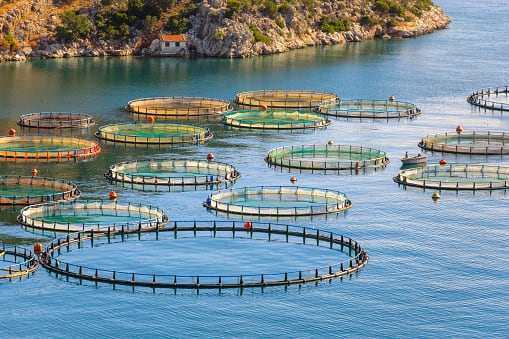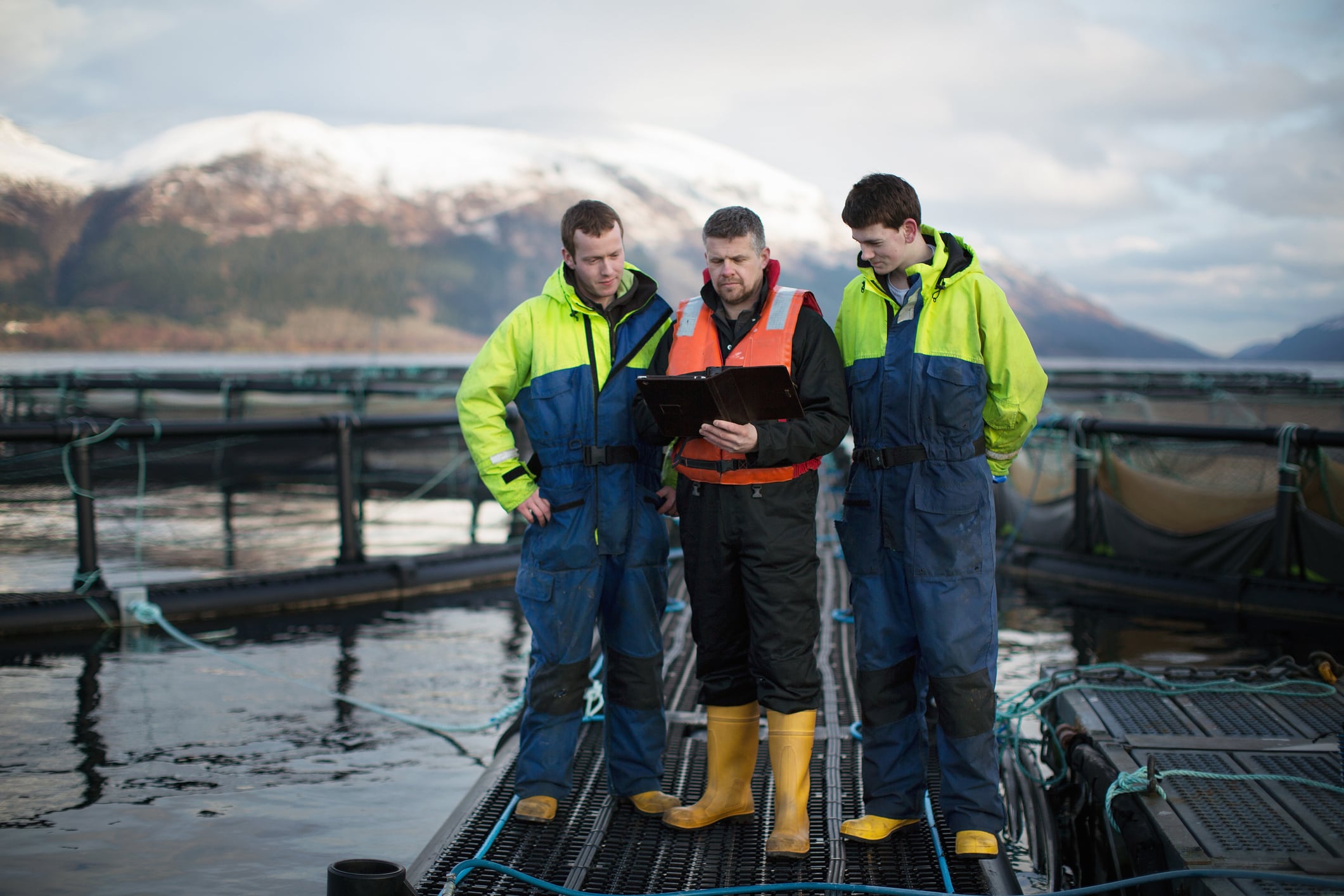Titled Analysis of Farmed Seaweed Carbon Crediting and Novel Markets to Help Decarbonize Supply Chains by The Nature Conservancy (TNC), in collaboration with Bain & Company, the report explores avenues to catalyse significant growth in seaweed farming, with a focus on carbon crediting programmes and the development of novel markets for seaweed products.
In a concerted effort to combat climate change and promote sustainable practices, the spotlight is firmly fixed on the age-old practice of seaweed farming as a vital contributor to carbon reduction efforts within supply chains.
Deeply rooted in various global cultures, the practice is gaining renewed attention as a thanks to seaweed’s potential to sequester carbon and ability to serve as a sustainable substitute for carbon-intensive products, spearheading an evolution in supply chain dynamics.
Seaweed farming landscape
Currently, over 80% of the world's farmed seaweed originates from China and Indonesia. Of this production, 40% is directly consumed by humans, while another 40% is used as an ingredient in various food products and consumer goods.
Near-shore environments have historically been the primary sites for seaweed cultivation due to economic feasibility and a range of ecological benefits. Seaweed cultivation has been shown to enhance water quality, foster biodiversity in surrounding ecosystems, buffer against ocean acidification and impose minimal resource requirements when compared to terrestrial farming.
Furthermore, emerging research suggests that near-shore seaweed farming can sequester small amounts of carbon in the sediment beneath the farms, making it an environmentally and socially favourable practice. Organisations like TNC have been actively working with seaweed farmers globally to promote ‘restorative’ farming practices and enhance livelihoods since 2016.
Carbon crediting potential
Seaweed's potential to sequester carbon has attracted considerable attention as a nature-based solution to combat climate change. With this in mind, TNC and Bain & Company conducted two critical analyses to facilitate the growth of seaweed farming — that of a carbon crediting programme and novel markets for seaweed products.
The first involved an assessment that explored the creation of a carbon crediting programme to provide supplementary income to seaweed farmers adopting practices that enhance carbon sequestration.
However, findings indicate that the current carbon prices of approximately US$30 per tonne of CO2 equivalent would not offer significant incentives for existing or new seaweed farmers. Even under favourable assumptions, the income generated from carbon credits would represent only a marginal increase in farmers' earnings.
Moreover, there are significant administration costs associated with carbon crediting programmes, making it unlikely that such initiatives alone could fund substantial growth in the seaweed market. For this to change, carbon prices would need to increase dramatically, or new farming practices that significantly increase carbon sequestration must be identified and verified.
As such, a dedicated carbon crediting programme is currently not on TNC's agenda, though it remains vigilant in monitoring emerging science and methodologies related to carbon sequestration and is open to reassessing the viability of such a programme if circumstances change.
Bio-stimulants and bio-plastics: A green revolution?
The second analysis focused on stimulating demand for sustainably grown seaweed by supporting the growth of new end markets for seaweed products, such as bio-stimulants and bio-plastics. These markets show immense potential for growth while offering lower carbon footprints than traditional alternatives.
For example, seaweed bio-stimulants have demonstrated the ability to generate about 50% fewer CO2 emissions per application, compared to chemical fertilisers. The growth in these markets could lead to substantial demand for seaweed products, potentially mitigating megatonnes of CO2 emissions per year.
Seaweed bio-stimulants have showcased their prowess in improving agricultural practices. These supplements, when combined with traditional fertilisers, offer advantages that include enhanced nutrient uptake, greater plant stress tolerance and improved soil quality.
While they currently represent a notable portion of the crop nutrition market, their adoption remains limited, reaching less than 0.5% of global farmland. However, the bio-stimulant market, valued at around US$1 billion, is poised for robust annual growth at a rate of 13%, potentially reaching one million tonnes of seaweed demand by 2027.
Currently, the bulk of seaweed used in bio-stimulant production is wild-harvested, raising concerns about its ecological impact amid soaring demand. Shifting towards farmed seaweed is essential to preserve wild seaweed populations that contribute significantly to ecosystem health.
Although the contribution of the bio-stimulant market to the global farmed seaweed market might seem incremental, it holds tremendous potential for regions with burgeoning seaweed farming industries, such as Europe and the Americas.
At the same time, bio-plastics — derived from renewable sources like seaweed — offer a greener alternative to traditional plastics, whose detrimental ecological effects have long been cause for concern. Seaweed bio-plastics not only reduce carbon emissions during extraction and processing but also decompose more quickly after use, often becoming industrially compostable.
In the bio-plastics market, seaweed faces competition from other feedstocks, many of which are cheaper. For seaweed to penetrate this market, structural changes such as premium pricing, subsidies, or breakthroughs in processing technology are necessary.
Despite their potential, however, seaweed bio-stimulants and bio-plastics face hurdles that limit growth to approximately one million tonnes in each market without targeted investments from governments, non-governmental organisations (NGOs) and industry players.
Key strategies include differentiating farmed seaweed as a premium product and reducing production costs through research and technological advancements. Additionally, incentives and subsidies are crucial to encourage seaweed farming, particularly in regions with regulatory barriers.
A unified effort for a sustainable future
Recognising the myriad benefits of seaweed farming, TNC has stated its commitment to supporting restorative seaweed aquaculture. This includes promoting better farming practices, exploring alternative financing methods, investing in research and partnering with local farmers and industry players. In the near term, TNC aims to encourage at least one million tons of seaweed farming growth.
While seaweed farming offers a promising avenue for carbon sequestration and carbon reduction in supply chains, carbon crediting programmes are not currently positioned to be a major economic driver for the industry. The focus should instead shift to nurturing novel markets for seaweed products, such as bio-stimulants and bio-plastics, which have the potential to significantly reduce emissions while driving demand for seaweed.
In the broader scheme of things, the seaweed ecosystem's stakeholders must collaborate across the board to ensure sustainable seaweed farming practices and position seaweed as a vital player in supply chain decarbonisation. Together, they can drive efficiency, stabilise market access and promote seaweeds as a vital, lower greenhouse gas emissions alternative, supporting a net-zero emissions future.




